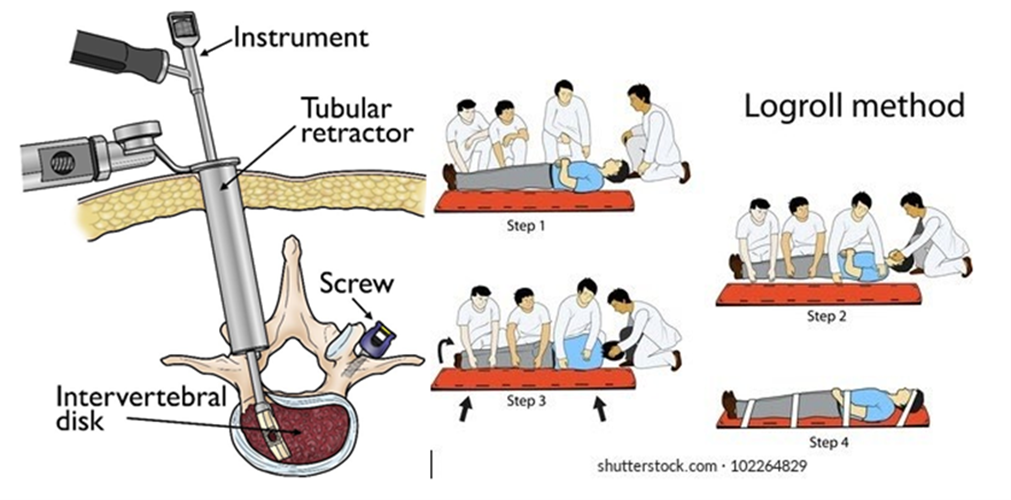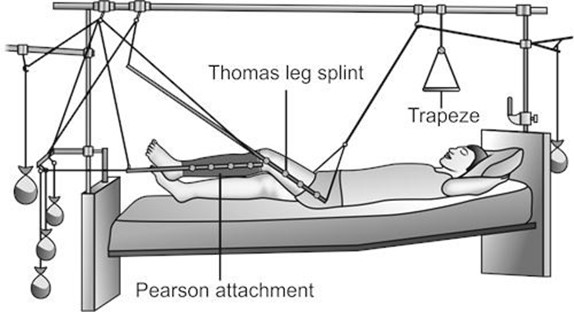The nurse is caring for an adolescent with scoliosis who is recovering after a surgical spinal instrumentation.
Which technique should the nurse use when moving this client?
Cross the arms and legs.
Perform a log roll.
Raise the hips.
Flex the knees.
The Correct Answer is B
When moving an adolescent with scoliosis who is recovering after a surgical spinal instrumentation, the nurse should use the log roll technique. This technique involves keeping the spine in alignment while turning the client onto their side. Crossing the arms and legs, raising the hips, and flexing the knees are not appropriate techniques for moving a client with spinal instrumentation.

Nursing Test Bank
Naxlex Comprehensive Predictor Exams
Related Questions
Correct Answer is B
Explanation
When caring for a child in balanced suspension skeletal traction, the most important intervention for the nurse to implement is monitoring peripheral pulses and sensation in the affected leg to detect any compromise in circulation or nerve function. This is crucial because the traction places tension on the bones, which can result in nerve or vascular damage.
Changing positions every 2 hours is important to prevent pressure injuries, but it is not the most critical intervention.
Cleansing pin sites and assessing skin for redness and signs of tissue breakdown are also important, but they are not as urgent as monitoring peripheral pulses and sensation.

Correct Answer is D
Explanation
The absence of continuous headaches in the child indicates that the VP shunt is functioning normally. A VP shunt is used to treat hydrocephalus by draining excess cerebrospinal fluid from the brain to the abdomen. If the shunt is functioning properly, it should relieve pressure on the brain and reduce symptoms such as headaches. The other options (A, B, and C) do not directly indicate whether the shunt is functioning normally or not.

Whether you are a student looking to ace your exams or a practicing nurse seeking to enhance your expertise , our nursing education contents will empower you with the confidence and competence to make a difference in the lives of patients and become a respected leader in the healthcare field.
Visit Naxlex, invest in your future and unlock endless possibilities with our unparalleled nursing education contents today
Report Wrong Answer on the Current Question
Do you disagree with the answer? If yes, what is your expected answer? Explain.
Kindly be descriptive with the issue you are facing.
